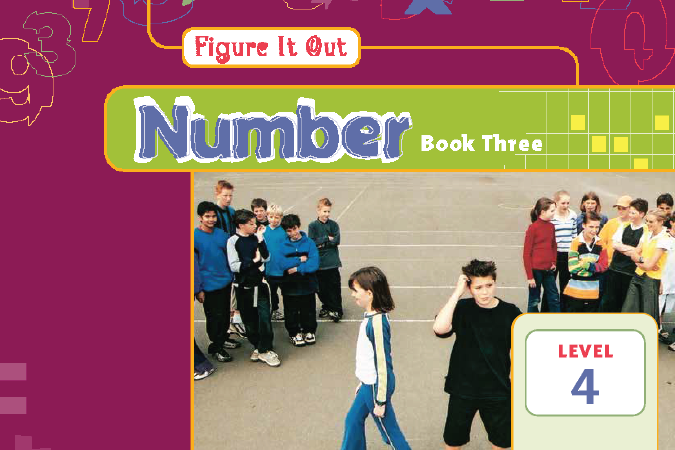Tasty treats
This is a level 5 number link activity from the Figure It Out series. It is focused on multiplying fractions by 2 and by 10, as well as multiplying and dividing with money. A PDF of the student activity is included.

About this resource
Figure It Out is a series of 80 books published between 1999 and 2009 to support teaching and learning in New Zealand classrooms.
This resource provides the teachers' notes and answers for one activity from the Figure It Out series. A printable PDF of the student activity can be downloaded from the materials that come with this resource.
Specific learning outcomes:
- Multiply fractions by 2 and by 10.
- Multiply and divide with money.
Tasty treats
Achievement objectives
NA5-3: Understand operations on fractions, decimals, percentages, and integers.
Required materials
- Figure It Out, Link, Number, Book Three, "Tasty treats", page 19
See Materials that come with this resource to download:
- Tasty treats activity (.pdf)
Activity
In this activity, the students use their knowledge of doubling and of fractions to increase the quantities of a recipe. They also need to work out the cost and profit of selling the honey crunch bars.
The doubling of the quantities is likely to be straightforward for the students, although some may need to rely on diagrams or materials to represent the quantities to help them.
For example, doubling 3/4 can be represented by the following diagram:
- 2 x 3/4

There are six quarters or 6/4, which is the equivalent to 1 2/4 or 1 1/2.
Multiplying the quantities could be treated in a similar way:
- 10 x 3/4

Moving quarters to fill up circles gives seven full circles and two quarters, which is equivalent to 7 2/4 or 7 1/2.
These diagrams should help the students to see the connection between this modelling and the more efficient way of working the quantities out: 10 x 1/4 = 10/4, which is the same as 2 2/4 or 2 1/2.
The students should know how to calculate profit (that is, money made minus the costs), but you may want to check this before they start question 3.
1.
- 250 g butter
- 2/3 cup honey
- 1 cup brown sugar
- 1 1/2 cups wholemeal self-raising flour
- 1 1/2 cups plain flour
- 1/2 tsp coriander
- 1 tsp cinnamon
- 1/2 tsp nutmeg
- 2 pinches ground cloves
- 1/2 cup raisins
- 1/2 cup almonds
2.
- 1.25 kg butter
- 3 1/3 cups honey
- 5 cups brown sugar
- 7 1/2 cups wholemeal self-raising flour
- 7 1/2 cups plain flour
- 2 1/2 tsp coriander
- 5 tsp cinnamon
- 2 1/2 tsp nutmeg
- 10 pinches ground cloves
- 2 1/2 cups raisins
- 2 1/2 cups almonds
3.
a. $19.50
b. $97.50 if no savings were made from buying larger quantities of ingredients. If savings were made, as is likely, the profit would increase.
The quality of the images on this page may vary depending on the device you are using.


